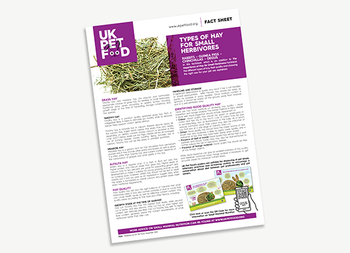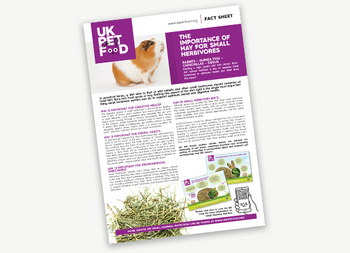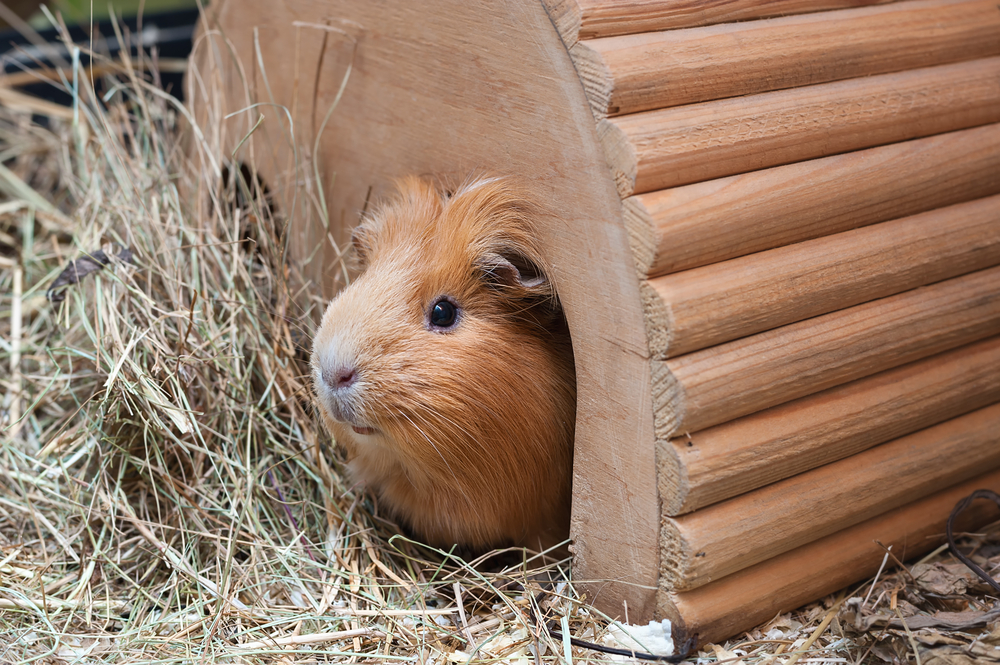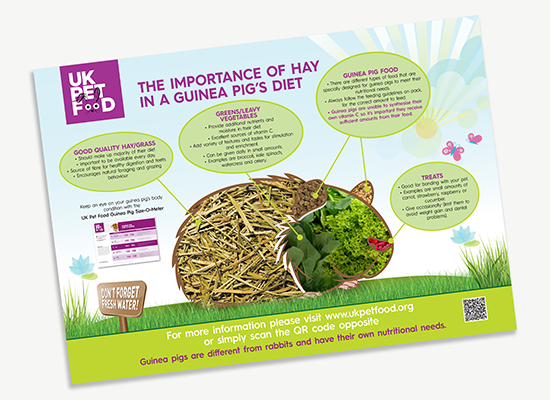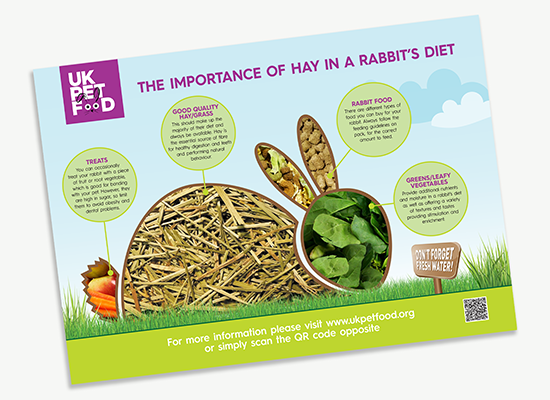Importance of hay for small herbivores
Small herbivores require a fibre-rich plant-based element to their diet, to supplement commercially prepared pet food.
Feeding a high-quality diet that mimics fibre-rich natural nutrition is key to keeping small herbivores in optimum health, but what does this mean?
In practical terms, a diet akin to that of wild rabbits and other small herbivores should comprise at least 80% fibre-rich fresh grass or hay. Getting this aspect of the diet right is the single most important thing small herbivore owners can do to support optimum dental and digestive health.
Hay is important for three key reasons:
The digestive system of small herbivores is fine-tuned for dealing with a diet of fibrous plant material and needs plenty of fibre to work efficiently.
Long indigestible fibre stimulates the gut and keeps food moving through it. Shorter fermentable fibre moves to the caecum, where beneficial bacteria help to break it down. If dietary fibre intake is inadequate, gut motility reduces or stops altogether (gastric stasis).
Gastric stasis is a serious condition for which veterinary attention should be sought immediately.
To gain enough nutrients from their plant-based diet, wild herbivores have to eat for much of the day.
Chewing on woody stems and fibrous vegetation wears the teeth down, so to compensate for this continual wear, the teeth of small herbivores are open rooted, meaning that they grow continuously. If they eat a diet that is lacking in fibre, there will be insufficient fibrous material to keep their teeth worn down and the end result is that teeth will become overgrown.
Teeth that are too long will make it difficult to chew food effectively. Uneven wear may also cause sharp spikes to develop on the cheek teeth, causing painful sores and mouth ulcers.
Small herbivores benefit from being able to display natural behaviours and they also have a requirement for mental stimulation.
In the wild, they spend extended periods of time foraging for food. Hay requires significant chewing, taking a relatively long time to eat. Providing unlimited hay, helps mimic natural foraging, helping to prevent boredom in pet herbivores and keeping them mentally stimulated.
Although grass can provide the fibre that these small herbivores need, it is rarely practical to rely on grass alone, especially during the winter months when supply may be scarce. Good quality, nutritionally appropriate hay, such as Timothy or meadow hay, is readily available and when stored appropriately, has the same nutritional benefits as grass.
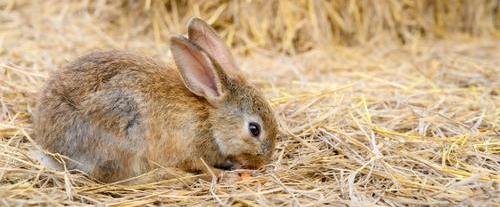
Small herbivores should be offered unlimited hay, but a body-sized portion every day is a good guideline. To ensure they receive a nutritionally optimal diet, they should also be offered a carefully measured portion of species-specific dry food every morning and evening.
To support dental and digestive health and mirror the natural diet, this too should be high in fibre. In addition, they should be fed a handful of appropriate fresh leafy green vegetables every day, and be provided with fresh clean drinking water at all times.
UK Pet Food’s posters are suitable for displaying at pet shops, veterinary practices and re-homing centres to encourage a conversation about diet between pet professionals and pet owners.
Choosing the right hay:
Grass hay
Timothy hay and meadow hay are popular and nutritionally appropriate choices of grass hay for feeding small herbivores.
Their nutritional value varies according to several factors, including the growth stage at the time of harvesting, storage conditions, and hay species.
Timothy hay
A high-quality grass hay that lasts a long time.
It contains a lot of fiber that can't be digested, which helps keep the gut moving smoothly. Its rough texture also helps wear down rabbits' teeth properly.
Timothy hay naturally has very little calcium. When rabbits eat calcium, their bodies absorb almost all of it, so the amount can change a lot depending on what they eat. If they get too much calcium, they might get bladder stones. Since Timothy hay is naturally low in calcium, you can give it to rabbits in large amounts without worries.
Meadow hay
The general name for hay that's cut from fields that have been there for a while. It might have not only grass but also other plants and flowers.
Meadow hay is usually softer than Timothy hay. The nutrients in it depend on what types of grasses and other plants are mixed in the hay.
Alfalfa hay
Alfalfa hay comes from a type of plant called a legume. It has more fibre but also more protein and calcium than grass hay.
Having more calcium (around 1-2%) is great for helping young animals grow and for mothers who are nursing baby animals. You shouldn't give alfalfa hay to grown-up rabbits. It can be used in pellet diets, but only if the recipe is made to have the right amounts of calcium and protein for the animals' needs.
Maintaining the quality of hay
Poor-quality hay lacks the right balance of nutrients that small herbivores need. It may also contain particles of dust or mould that can cause health issues as well as affecting nutrient content.
Hay quality varies according to hay type plus other factors, including:
- Its stage of growth when harvested. Timothy hay can be cut at different times and this affects its qualities. The first cut has the most fibre, the second cut has more leaves and fewer stems, and the third cut has even more leaves and less fibre. Usually, the first cut of Timothy hay, with its extra fibre, is better for the nutritional needs of small plant-eating animals, compared to later cuts.
- Handling and storage. Hay can lose its quality if it's not taken care of properly. After it is harvested, hay should dry out fast when it's sunny outside. When it has the right amount of moisture, it should be kept off the ground, away from moisture, and in a place with good airflow.
Tips for identifying good quality hay:
Look at the colour
Good hay should be green or green-gold and feel dry. If it's lost its colour due to sun, rain, or being stored improperly, it's not as nutritious. Light-coloured hay might also mean it was cut when it was too mature.
Smell the hay
Good hay should have a fresh smell, like newly cut grass. If it smells musty, it's probably lower quality and might have been stored in a damp place.
Check for dust or mould
Good hay doesn't have dust or mould. Some hay is even processed to remove dust and lower the risk of breathing problems.
Look for foreign objects
Good hay doesn't have anything strange in it.
Download our handy PDF guides to hay for small mammals:
